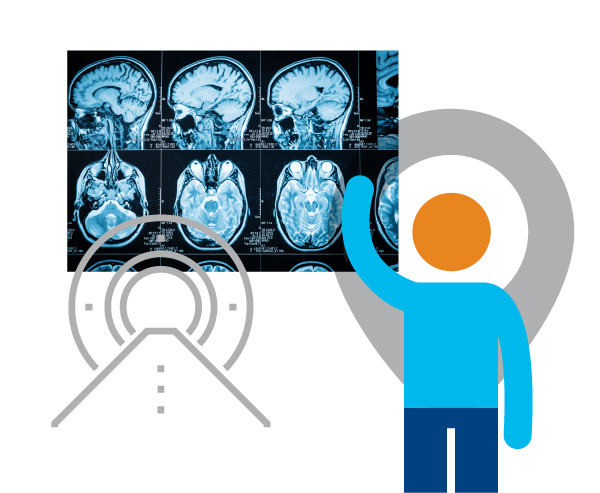The Basics
At its core, a CT scan uses X-ray technology to generate detailed cross-sectional images of the body. CT scans provide intricate images of the body offering a comprehensive view of internal structures including bones, blood vessels and soft tissue . In contrast, traditional X-rays only produce flat images.
The Process
- Before a CT scan, patients should change into a hospital gown. They should also remove any metal objects or jewelry that could interfere with the scan.
- Image Acquisition: The patient lies on a motorised table that moves through a doughnut-shaped machine called a CT scanner. The table moves and the scanner emits rotating X-ray beams to capture multiple images of the body from different angles.
- The CT scanner collects data from these images and the computer processes it. Smart computer programs use complex maths to create pictures of the inside of your body.
- These pictures show organs, bones, blood vessels, and soft tissues.
- After the images have been taken a Radiologist will interpret them to diagnose medical conditions.
- A radiologist is a specialised medical doctor
Advantages
CT scans offer several advantages in diagnostic imaging:
- Detailed Imaging: The cross-sectional images provide detailed views of internal structures, aiding in precise diagnoses.
- Speed and Efficiency: CT scans are relatively quick, making them suitable for emergencies where prompt diagnosis is crucial.
- Versatility: CT scans can detect a wide range of conditions, including tumors, internal injuries, vascular issues, and more.
Safety Measures
While CT scans are incredibly beneficial, they do involve some exposure to X-ray radiation. However, advancements in technology have significantly reduced radiation doses in modern CT scanners, making them safer for patients. The benefits of accurate diagnosis often outweigh the risks associated with the minimal radiation exposure.
The evolution of CT scans has revolutionised medical diagnostics, enabling healthcare professionals to obtain detailed, three-dimensional views of the body’s internal structures. In Australia, CT scans are important for diagnosing medical conditions, planning treatment, and helping patients get better.
Understanding the intricacies of how CT scans work allows patients to see their significance in modern healthcare. With ever-improving technology, these imaging methods offer more accuracy and effectiveness, shaping the future of medical imaging globally.
Disclaimer: Please note, if you have any questions or reservations about an upcoming radiology scan, it is always recommended to consult with your healthcare provider, who can address your concerns directly. This is general information, not tailored to a specific individual. Please read our Terms and Conditions.







